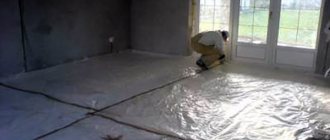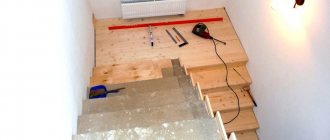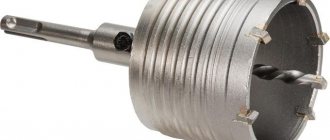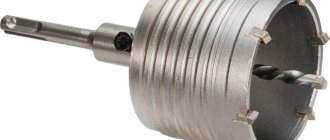Rare repairs can be done without drilling into the walls. If they are made of brick, it is important to familiarize yourself with how to carry out such manipulations before starting work.
Before drilling into a brick, you need to select a tool. The most common options are a drill and a hammer drill. The latter is a professional device, which means that with its help you can cope with the task in a shorter time. If you plan to use a drill, then the main thing for it is to choose the right drill.
Methods for drilling bricks
Drilling a brick wall can be done in one of three ways:
- manual work method;
- electromechanical tools;
- using automatic drilling technology.
The first method is the simplest, but less technologically advanced. It is used if the master does not have the appropriate equipment. Electromechanical technology allows drilling to be completed in a shorter time. For this purpose, a hammer drill or drill is used. As for automatic drilling, it can be used to make holes of impressive diameter - up to 110 mm.
Manual drilling method
Drilling holes in a brick wall using this technology is carried out if there is no electrical equipment. All you need is a hammer and a bolt. The latter is a metal tube that you can make yourself or purchase ready-made. If you resort to the first solution, you will need to prepare a 30 cm piece. The diameter of such a device should be 25 mm or more. Notches are made at one end.
The technology suggests itself if you imagine these tools: once the location for making the recess has been determined, the bolt is installed at a right angle to the wall, and its other end should be struck with a hammer. The bolt rotates, which will prevent the formation of large amounts of dust.
Electromechanical drilling technology
In order to drill a wall in a shorter time, you should use technology that requires the master to have a drill or hammer drill. In the first case, you need to make sure that the equipment has a shock function. Otherwise, you will have long and monotonous work, which, among other things, may not allow you to achieve a positive result.
The ease of the process will depend on the number of revolutions and power of the tool. The most suitable value for the number of revolutions is considered to be 2000 or more. With an increase in this parameter, you can count on the fact that the hole can be made in the shortest possible time. If you are just planning to purchase a drill, it is important to make sure that it has a keyless chuck and a reverse function. In the first case, you do not have to additionally use a clamping wrench.
Drilling can be done right through the brick. For this purpose, a hammer drill with diamond bits is often used. The working part of the equipment must have rounded edges. This equipment should also have an impact option. In order to avoid placing a large load on the hammer drill and consumables when it is necessary to make holes of impressive diameter, you should start with small drills and finish the work with large ones.
If you have warm ceramics or hollow products, you need to turn off the impact function, as this may destroy the material. If the brick has a high grade and good strength, which also applies to clinker products, the electrical device is set to medium speed, otherwise the equipment may become dull.
Attention! If the wall needs to be drilled for installation of a hood, socket or plumbing system, diamond drilling should be used. For this purpose, a crown with especially strong teeth is selected. If used with the tool in impact mode, it may cause the base to be torn out. In order to eliminate such a nuisance, you need to start drilling from the masonry seam.
Automatic brick drilling
If you need to drill a brick wall in a hard-to-reach place, for example, in a corner, or you need to make a recess of impressive diameter, ordinary tools will not help. Here you should use automatic technology, which involves the use of special installations.
Typically, the process involves crowns with a diameter of 2 cm or more. The drilling depth can reach 4 m. This technique is good because it is silent, and 1 cm of thickness can be overcome in a few tens of seconds. To operate such equipment, you need water and an electrical connection. The tool is fixed on a vertical surface, then water is supplied to the drilling site. The work is carried out automatically without human intervention.
Which attachments are better?
To be able to drill into a concrete wall with a drill, you must first select the appropriate attachments. They must match the design exactly.
The following types are suitable for work:
- Impact-type toothed crowns. They perform the drilling function. To work with concrete, it is better to purchase varieties of teeth soldered separately. Since they are made of durable metal alloys.
- Diamond crowns. This type is suitable for hammerless drilling. Such nozzles are more advanced, so you can get a finished hole in concrete much faster and easier. These crowns have special shaped cutouts and an abrasive structure on the edge. All that remains is to select the required length of the nozzle. In private use, varieties with a diameter of up to 120 mm are usually used.
- Crowns of the KS standard with a cutting edge coated with diamond particles. The attachments are used on stone, solid walls, concrete slabs and exterior walls of buildings.
- Drills for concrete. Ideal for drilling walls without reinforcement. Otherwise they may break.
Before using any attachments, you must check the wall for the presence of cables and wires, as well as fittings (if you have a metal detector). This will help protect the wall from major damage and the tool from breakage.
Drilling tool
If you're wondering what to use to drill into a brick wall, there are several options to consider to decide which one is right for you. The simplest method is mechanized, which involves the use of a hammer and a bolt. This work algorithm will not allow large-scale work to be completed, but if there is only one hole, this approach will be ideal.
A more technologically advanced method compared to manual drilling is the electromechanical method. Here you can’t do without a drill, or, at a minimum, or at a maximum, without a hammer drill. It is better if the drills and augers are new, then the work will go faster. But diamond drilling of brick walls is usually carried out by professionals. It usually does not produce dry dust, but the work area will still require cleaning. The thing is that diamond drilling is accompanied by cooling of the equipment with water. However, only specialists can cope with such a task.
Attention! If you plan to drill brick walls yourself using electric household tools, you need to not only mark the hole, but also core the future hole. This will prevent the drill from slipping.
Conclusions on selecting a drill for dowels
To choose the right type, diameter and length of dowels, you need to know the following:
- What material is the supporting structure?
- What is the load on the fastening element?
- What is the mounting location: vertical or horizontal?
- What is the depth of the future hole?
- How deep will the screw go?
By answering these questions, you can decide what type and size of fastener is suitable for a particular task. And the markings will tell you how to choose the right drill.
In our company you can purchase high-quality dowels in bulk from a direct manufacturer. To place an order, call us or leave a request in the form on the website.
Selecting and purchasing a drill
The diameter of drills for making holes in brick usually varies from 6 to 8 mm. This value is average, as is the depth, which is usually 15 cm. To make holes with more impressive parameters, it is better to use a drill. Its length reaches one meter, but it is used in conjunction with a drill and a hammer drill. The first one must have the function of a hammer drill.
When there is a thick wall, it is better to act in several approaches. To begin with, a 20-centimeter drill is used, and the recess is approximately 15 cm. Then the depth should be increased to 40 cm, and at the final stage - to 50 cm. During this process, a hammer drill will be needed.
Attention! The presence of an outlet on the wall will help identify and naturally not affect communications. If you don’t have the appropriate equipment at hand with which you can find out whether the wires are running inside, you can follow the first recommendation. But the electrical wiring must be de-energized in any case.
How to drill cement?
The best option is to use a tool with carbide tips, which in everyday life is commonly called “drills with a pobedit tip.” For reference. Pobedit is a hard alloy of tungsten carbide and cobalt materials in a ratio of 90:10.
Interesting materials:
How to remove super glue from hands? How does Pavel Petrovich relate to the people? How to display a grid in Word? How to unsubscribe from Chrome subscription? How to polish the leather on a bag? How to send a large video by email to mail ru? How to send a money transfer by mail? How to send Geolocation to WhatsApp? How to submit for moderation in Mash? How to send a parcel back to the sender?
How to make a hole in a brick wall
Before drilling into a brick wall, you need to check for electrical wiring. Then marking is carried out. You need to decide on the parameters of the recess. Depending on this, drills, drills or crowns will be selected.
Preparing tools
If you plan to use a drill, its power should not be less than 600 W, and the number of revolutions should be approximately 2500 or more. Make sure the equipment has a reverse function so you can adjust the power. Brick is resistant to static loads, so the equipment must have an impact option.
The material should be influenced dynamically, only then will it be possible to achieve results. This is why a household drill is not suitable for the process. If you still decide to take a risk and use such a device, you may be faced with the need to repair the drill, since its motor will certainly overheat and fail.
Preparatory work
In addition to electrical wiring, there should be no fittings in the wall. To find it, you should use a metal detector. If there is no tool to find the wiring, you need to make sure that it does not pass through the seams under the layer of plaster. To do this, before starting drilling, you need to deepen the seams a little.
Drilling holes in a brick wall
To make an even recess, you need to install the drill perpendicular to the wall. First, several short inclusions are made so that the equipment deepens a few millimeters. Next, you should begin the main process, removing the drill from time to time and allowing the drill to rest a little.
Cost of work
The pricing of concrete drilling services is influenced by factors such as:
- diameter of the required hole . As the diameter increases, the cost of drilling also increases;
- material of the surface in which drilling will be done. In reinforced concrete structures, drilling is more expensive than in brick walls;
- drilling depth Naturally, the longer the future hole is, the more expensive the drilling itself will be.
Additional factors may also influence the cost of drilling work. For example, drilling at height requires the use of additional equipment. Drilling at an angle cannot be performed without the use of a special tool.
The cost of work may also increase if it is carried out outdoors and in adverse weather conditions.
Estimated cost of drilling holes with a diamond tool:
| Hole diameter, mm | Cost of 1 cm of drilling, rub. | ||
| Brick | Concrete | Reinforced concrete | |
| 16 – 67 | 20 | 26 | 30 |
| 72 – 112 | 22 | 28 | 35 |
| 122 – 142 | 24 | 30 | 37 |
| 152 – 162 | 28 | 35 | 44 |
| 172 – 202 | 39 | 50 | 66 |
| 250 | 57 | 77 | 94 |
| 300 | 72 | 88 | 110 |
| 400 | 110 | 135 | 155 |
| 500 | 135 | 175 | 195 |
| 600 | 145 | 195 | 210 |
Useful advice from professionals
If you have a solid wall, it is better to choose a pobedit drill. Only it can cope with particularly durable material and not wear off completely. Such equipment lasts longer, and can be used even after that.
In everyday life, 15-centimeter drills are usually used, but on sale you can also find auger drills, which have impressive dimensions and are suitable for hammer drills.
How to make a hole without defects
In order to avoid unpleasant consequences, you need to make sure that there is not only electrical wiring in the wall, but also water and sewer pipes, which are often hidden in the masonry. The presence of electrical wiring can be indicated by a socket on the wall; wires from it run to the switch.
How to drill without dust
If the room is already finished, such a need may arise. If the electric tool you are using does not have a connection pipe for connecting a vacuum cleaner, you can use the help of a second person who will remove dust as soon as it begins to spill out of the new hole, leaning the suction tube against the recess. If you work independently, you can place something like a shelf at the point of impact on the wall, where all the dust will fall.
Creating a Niche
If you plan to drill a recess larger than 20 mm or need to create a niche for a socket, you should purchase a Pobedit drill bit. Multiple holes are made along the intended line, the jumpers between which are then removed using a chisel and hammer. An alternative and more technologically advanced solution would be to use a hammer drill and a crown together with it.
Practical advice from experts
It is important to use tools and equipment correctly. A set of drills with different performance characteristics is prepared. Concrete walls are lined with wood, tiles, and stone, for which you will need different drills. Before work, make sure that there is no wiring under the plaster at the drilling site.
If, when drilling, the walls come across reinforcement, insert a metal drill. Professionals sharpen their tools so that they pass through concrete, metal and other materials, but this requires a lot of experience.
Before drilling, pay attention to important points:
- for holes deeper than 10 cm and with a diameter greater than 12 mm, use a hammer drill;
- work begins at reduced speed, the impact function is turned on when the rod deepens by 5 mm;
- holes for dowels are drilled 10 mm longer than the plastic body.
If the drill bit gets stuck while going deeper, it is removed and the hole is drilled with a punch to break the encountered stone and move further.
Diamond drills are more expensive than pobedit drills and are used only without the inclusion of an impact mechanism. They need to be cooled every 10 minutes; this must be done without water, only in air.











